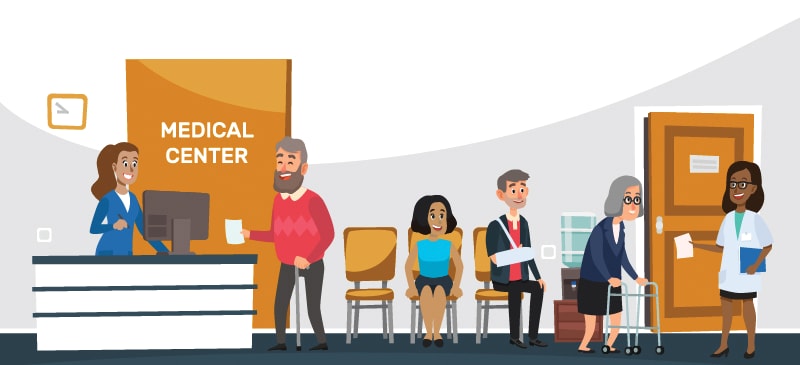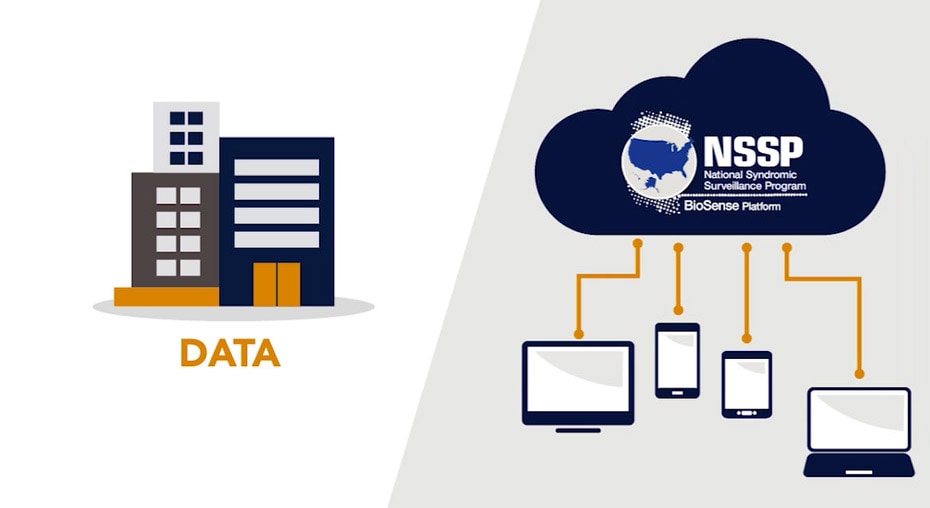How We Conduct Syndromic Surveillance
Syndromic surveillance is a collaborative effort between local and state health departments, CDC, and other partners. This page outlines how we conduct syndromic surveillance.
- People seek treatment in a medical facility, such as emergency department or urgent care.

- Medical facility sends de-identified data including chief complaint, diagnosis codes, patient characteristics, and location to state and local health departments or to data aggregators such as Health Information Exchanges.
- Public health departments and Health Information Exchanges contribute data to the NSSP BioSense Platform.

- Data gets sent to BioSense Platform.
- From BioSense Platform, the NSSP Community of Practice:
- Conduct syndromic surveillance to monitor public health
- Share data via NSSP BioSense Platform
- Build skills via webinars, trainings, and workgroup participation
- Collaborate to develop methods and respond to emergencies

- The CDC provides:
- Analytic tools, services, and system infrastructure
- Funding to health departments
- Technical assistance and training
- Data analysis support
- Collaboration on specific projects
Download the How We Conduct Syndromic Surveillance Infographic [PDF – 837 KB]
